In Computer Keyboards, there are many factors such as Mechanical switches, Keycaps, and Layouts that drastically impact typing speed and comfortability throughout your typing journey.
Especially for hardcore gamers and professional typists, these factors broadly impact their typing behavior.
When buying a keyboard, you certainly came across the term ANSI vs ISO layout.
Because these two are the most popular keyboard layout that describes the size of the keyboard and position of the keys.
These layouts may create some confusion for the users, especially those who are not much aware of the keyboard layouts.
Well, you don’t need to worry as I’m going to cover an in-depth comparison between ANSI vs ISO keyboard layouts along with their advantages and disadvantages and get to the conclusion on which is going to perfectly suit your hand.
Let’s get dive into the details!
ANSI vs ISO is the two most common keyboard layout that both stands for the international organization which set layout standards for computer keyboards and other products.
Both are very popular layouts in Western countries, especially the ANSI layout is most preferred in the United States due to certain reasons.
ANSI and ISO layouts have many similarities between them but some key points differentiate both layouts.
Take a look at the brief overview of both ANSI vs ISO layouts:
ANSI
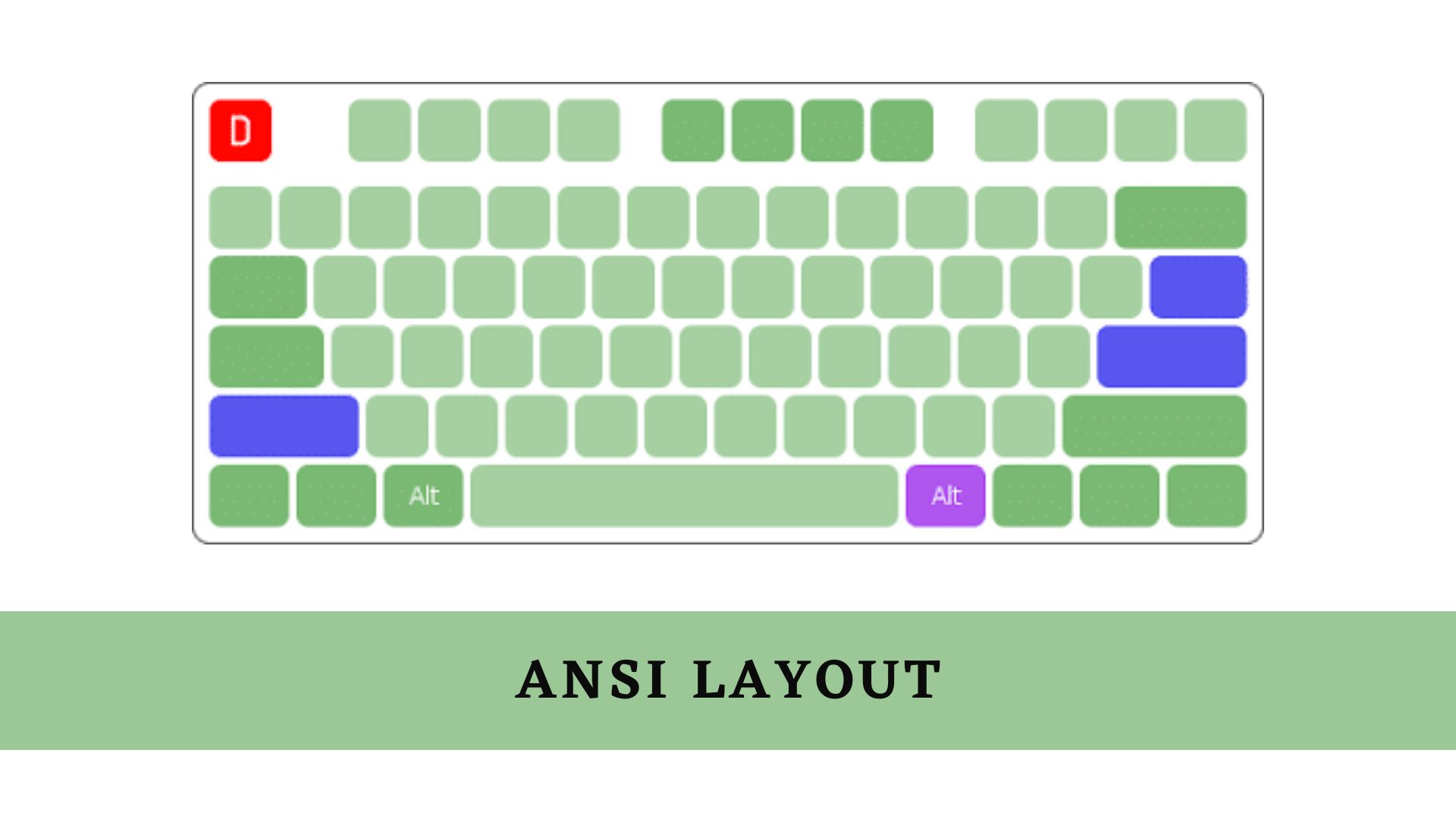
The ANSI stands for American National Standards Institute which determines the international standards for keyboards and describes the position and size of the keyboards keys.
As the name suggests, the ANSI layout is widely used in the United States due to its more oriented design which is highly suitable to English standards.
The Enter key and the Shift key is the most significant difference between ANSI vs ISO Layout, you can directly observe this difference by looking at both keyboards on the same desk.
The ANSI is not only popular in America but with time it is being liked by many other users in some other countries as well due to its brilliant structure and well-key placements.
ISO
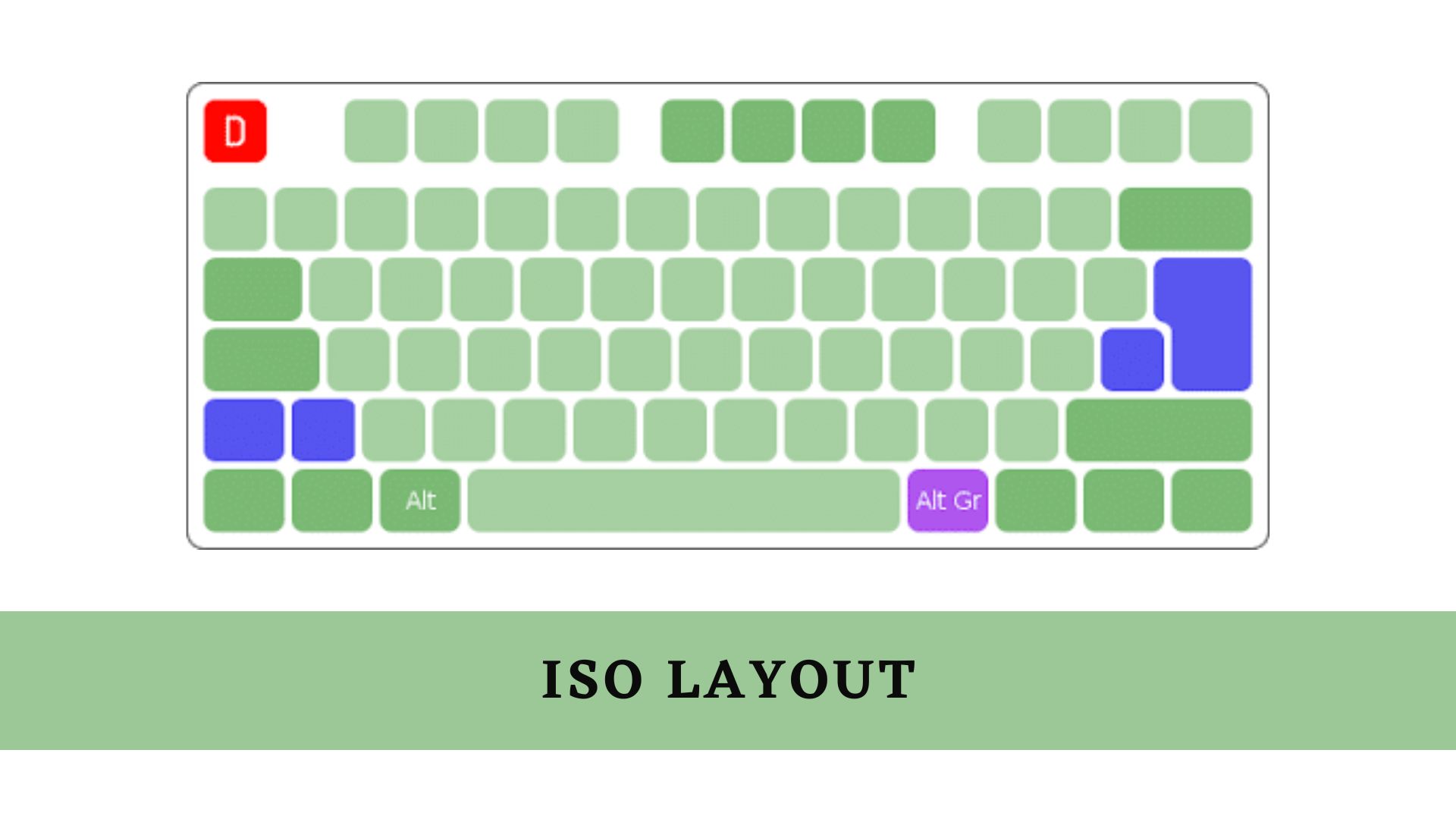
The ISO stands for International Organization for Standardization which also determines the layout of the keyboard, size, and placement of the keys.
The ISO Layout is used mainly in European countries because its design and structure match their country’s standardization as well as circumstances.
Compared to ANSI Layout, this ISO layout has one extra key mounted on the keyboard.
I would say this ISO layout is a very common layout among keyboard users, especially in Europe you will see most of the keyboards built on the ISO Layout.
For understanding the differences between ANSI vs ISO in detail, we will explore the vital differentiating factors one by one.
First of all, take a look at the comparison table of ANSI and ISO layouts:
ANSI vs ISO Layout Key Differences
Technical Factors | ANSI | ISO |
Full Form | American National Standards Institute | International Organization for Standardization |
1. Enter Key | Enter key is placed horizontally in a rectangular shape | Enter key is placed upside down in L-shape. |
2. Left Shift Key | In ANSI layout, both left and right shift key usually same in size | In ISO layout, the left shift key is small nearly 50% in size and quite similar to Ctrl key. |
3. Backslash Key | Backslash key is placed just above the Enter key. | Backslash key is placed just left side of the Enter key. |
4. Right Alt Key | ANSI features left and right Alt key in a same size. | The Alt Gr key is found insted of Alt key in ISO layout. |
5. The Number of Keys (Full-Sized Keyboard) | 104 keys for Full-sized Keyboard. | 105 keys for Full-sized Keyboard. One extra key is placed just near the left shift key. |
87 keys for Tenkeyless (TKL) Keyboard. | 88 keys for Tenkeyless (TKL) Keyboard. | |
68 Keys for 60% Layout. | 69 Keys for 60% Layout. |
ANSI vs ISO Layout: In-Depth Comparison
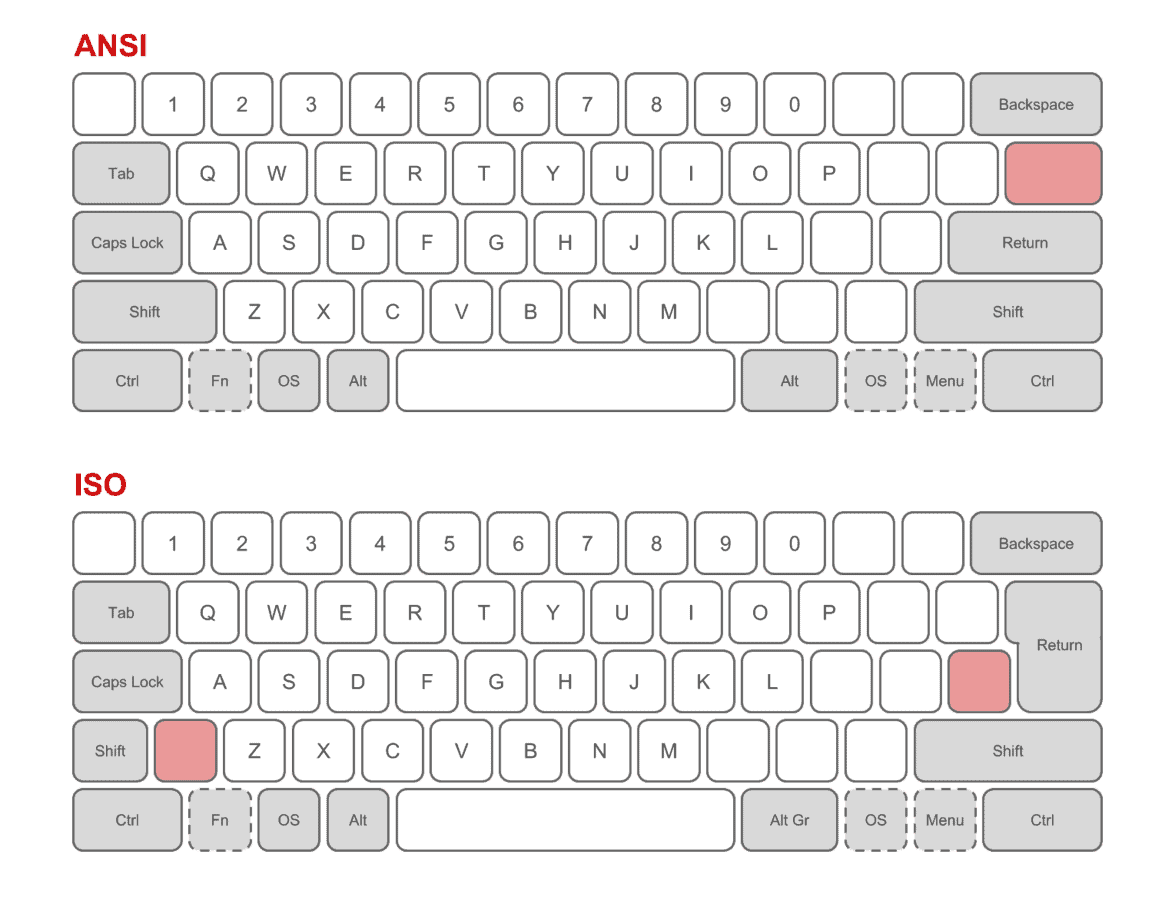
As we have seen through the following points how both ANSI and ISO are different from each other but one thing is certain both layouts have their utilities and applications during typing.
To get the precise answer, let’s break down all differentiating factors into details.
1. Enter Key
The Enter key difference can easily be observed at the first glance by the user as this is the prominent factor that distinguishes both the layouts.
In ANSI Layout, the Enter key is placed horizontally in a rectangular size which is wider and occupied the size almost the same as the Capslock key which is placed on the left of the same row.
Whereas In ISO Layout, the Enter Key is placed in an upside-down L-shape and occupies lesser space horizontally and longer space vertically compared to ANSI layout.
The Enter key placement in both layouts is identical but in my opinion, the ANSI Enter key is easier to reach and easy to actuate while typing frequently.
I embedded an image illustrating both the layout so you can understand it better and more precisely.
2. Left Shift Key
As far as the Shift key is concerned, It is also the most dominant key on the keyboard and played a vital role in making the keyboard ergonomic during typing.
In ANSI Layout, both left and right Shift keys are wider and horizontally placed, along with occupying the same size and space means both are exactly the same.
But with the ISO layout, there is a slight difference in size and placement for the Shift keys. The left Shift key is almost 50% smaller than the right side Shift key.
The left side shift key in ISO becomes very similar to the Ctrl key which is mounted just below. This may create some difficulties for the users during typing especially when you are habitual of typing on the wider shift key.
You may accidentally press the key which laid close to the shift key instead of the actual shift key.
This factor should definitely be kept in mind before picking a layout between ANSI vs ISO for your keyboard.
3. Backslash key
The Backslash key (“\”) in both layouts is aligned in different positions.
For ANSI layout it is aligned directly above the Enter key, in terms of size, it is very similar to the rightly placed Ctrl key.
However, In ISO keyboards, the Backslash key is moved directly to the left side of the Enter key.
Although the placement for the Backslash key doesn’t impact widely due to its lesser usage during typing it should be considered before picking a layout between ANSI vs ISO keyboards.
User can opt for any layout according to their preferences in which he feels more comfortable typing on the keyboard.
4. Right Alt key
In the ANSI layout, the Alt key for both sides (left and right) are identical and occupy the same size on the keyboard means both are the same in terms of size.
Whereas In the case of ISO layout, the right Alt key is very different. It is relatively smaller than the right side and known as Alt Gr (Alt Graph Key).
Well, based on my typing habits, I would say the Alt key in the ANSI keyboard is more comfortable to type, have standard placement, and give you an identical feel during typing on the keyboard.
Have you seen Alt key position on your keyboard; if not, see the Alt key placement and comment down which layout are you using for your keyboard.
5. The Number of Keys
ANSI keyboard contains 104 keys for a full-fledged keyboard whereas ISO keyboards are equipped with 105 keys for a full-sized keyboard.
For compact keyboards like Tenkeyless, the ANSI keyboard has 87 keys, whereas, in the case of the ISO keyboard, it has 88 keys.
Similarly, for 60% of keyboards, the ANSI keyboard has 68 keys, whereas the ISO keyboard contains 69 keys.
If you see the ISO keyboard has one extra key for all-size keyboards which is produced after breaking the left shift key into two parts that is the reason the Shift key is very small in the ISO layout.
Usually, this key represents the symbol <> key.
In case any key malfunctions, this extra key can be useful in programmable keyboards as it can be programmed to any key with the help of software.
Advantages of an ANSI Layout
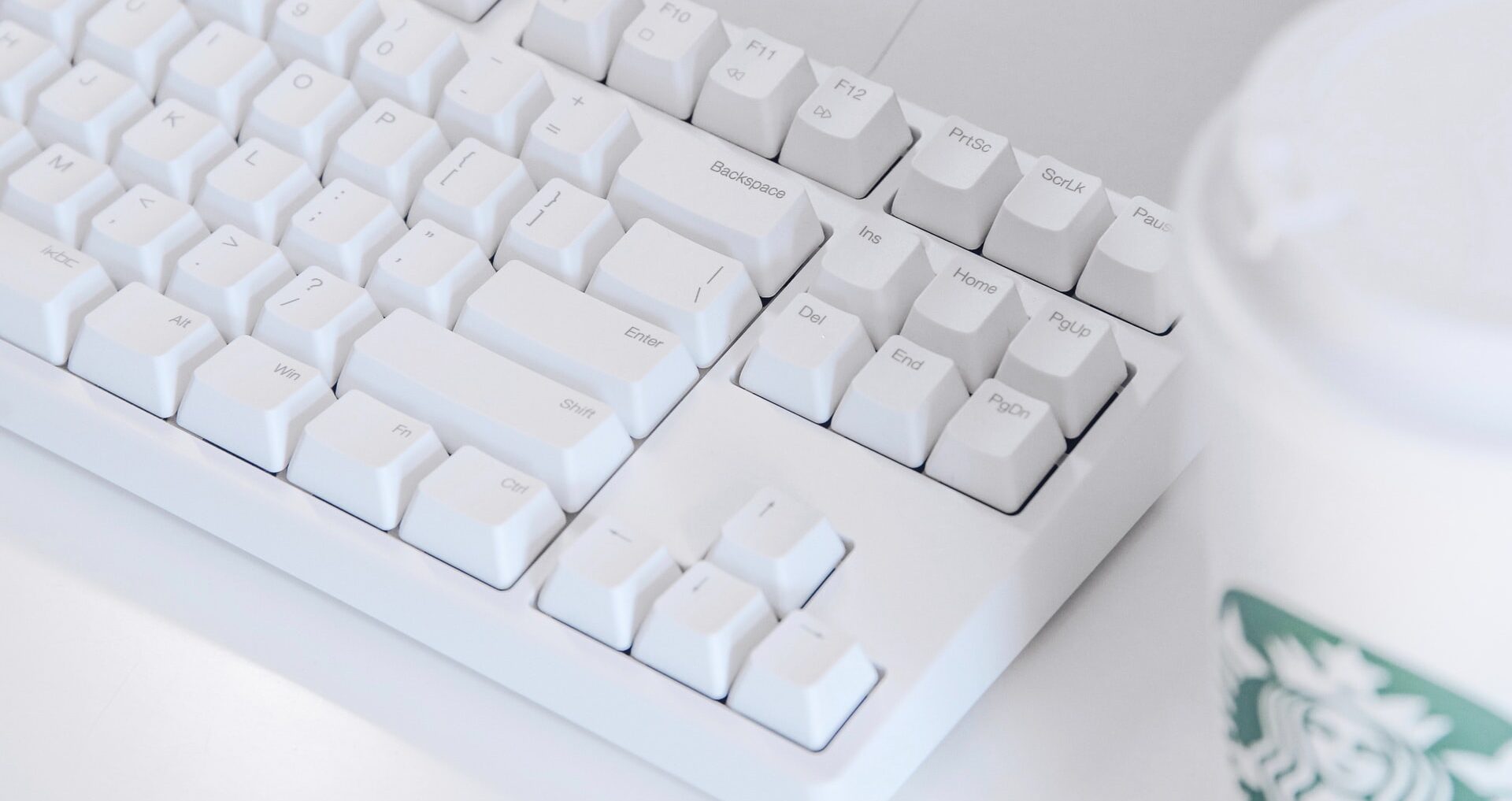
There are several advantages to using an ANSI Layout for your keyboard.
As we have seen above it has a more structured and identical key placement which increases ergonomics and comfortability.
Here are all the advantages of using an ANSI layout:
Increase Ergonomics
ANSI keyboards are best known to offer great comfortability which increases ergonomics during typing.
All the keys are perfectly mounted on the keyboard which helps you to type more frequently and is easy to recognize as well.
When you type on the ANSI layout keyboard, you feel more connected to it due to its Enter key placement and wider left shift key which is quite easier to reach with your fingers.
It can reduce strain and fatigue on your finger even when typing perpetually, thanks to its keys-oriented design.
Perfect For English Typist
As ANSI stands for American National Standards Institute, which means this ANSI is specially designed keeping in mind English standards for typing.
The overall key placements and the entire design in the ANSI layout are perfectly suited for the English typist although you can also use it for some other languages.
Their key placement is certainly a big upside for the professional typist which help user to type faster without many errors.
Easy Availability
ANSI keyboards are widely popular in the United States as well as in other countries where US English is the second most popular after their native language.
For that reason, I would say ANSI keyboards are easier to find whether it is online platforms or Offline stores, it is available most of the time.
The ANSI manufacturers are also relatively higher because of their always high-in demand on the market.
Due to their easy availability, ANSI keyboards are found on most computer desks.
Easy Customizable Keycaps Set
As ANSI Keyboard is in High demand, the Keycaps availability is wider and provides many options in front for the users to pick the best according to their color preferences.
Users can easily customize, and change the ANSI keycaps.
Kindly check out our in-depth article on ABS vs PBT Keycaps differences.
You don’t need to wait long to get ANSI keycaps delivered to your door because you don’t need to buy them in the group buy as their keycap set is mostly available on all the platforms as well as to the manufacturers.
Note: The ANSI layout has some downsides as well but I’m not mentioning them here as they didn’t impact your typing frequency.
Advantages of an ISO Layout
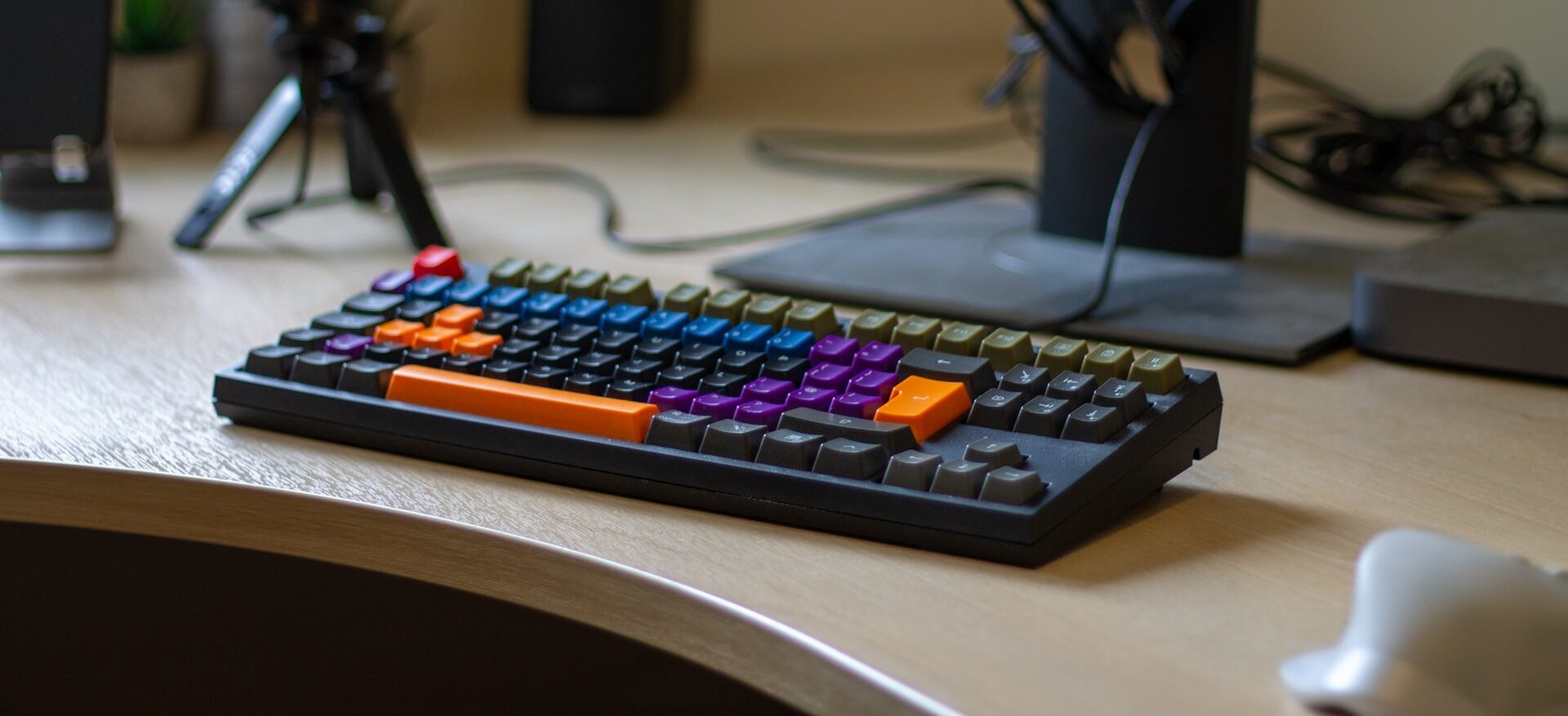
Even though ISO layout is not very popular among users, it provides some important benefits during typing.
Here are the significant advantages of using ISO layout for a keyboard:
The Alt Graph Key (Alt Gr)
The ISO layout has an Alt Gr key instead of an Alt key which is definitely a significant fundamental property of ISO Layout keyboards.
ISO layout is widely used in European countries and they have an accent of typing more symbols compared to the United States, so this Alt Gr key works as a typographic meta key to generate a third symbol on a keyboard.
For instance, if you want to generate “€” then you need to press the “4” key with holding the Alt Gr key. As In US “$” is typed with the “4” withholding a shift key.
Similar to other countries like INDIA, typing “4” with Holding Alt Gr will produce a “₹” symbol.
That’s how this Alt Gr key becomes so important while generating a third specific symbol.
A Closer Backslash Key
In ISO layout, the backslash key “\” is placed just close to the left side of the Enter key which can be beneficial for some users during typing.
This placement for the Backslash key is helpful for the programmers and the developers because this Backslash key is widely used while typing the source code of a program.
Apart from programmers, I didn’t find major applications for this Backslash key.
For day-to-day typing, and office work, the use of the Backslash key is very less or even negligible. But from a programmer’s perspective, this Backslash key placement going to be very useful.
Disadvantages of an ISO Layout
An ISO keyboard is not a very common layout that people use, It has some disadvantages as well which can’t be ignored by a user while making a decision.
These negative sides of ISO layout can significantly impact your typing so it’s become more prioritized to discuss these downsides in detail.
Take a look at all the disadvantages of using an ISO Layout:
Far Away Enter Key
This is the most significant downside of an ISO keyboard as it has a vertically inverted L-shape Enter key which is closer to the backslash key because of this, the distance between the Entering key and the Home row increases.
Having more distance creates some difficulties for a user while typing frequently as Enter key is frequently used during typing.
In most cases, users’ hands are laid on the home row, and to actuate Enter key, they need to jump their fingers over 2 keys to reach the Enter key as the distance is slightly more.
It also reduces ergonomics by having a far Enter key.
In practical application, you have to encounter this issue frequently while using an ISO layout, especially when you come from the ANSI layout.
Far Away Left Shift Key
Having a small left-shift key is also considered a major drawback when using an ISO keyboard.
In ISO Layout the size of both left and right Shift keys are not the same as the left side shift key is 50% small in size so if you have a habit to use the left side shift key while typing, you may press the wrong key probably just close to the shift key.
The left side shift key is split into 2 keys that’s why it becomes half in size in ISO layout.
The probability of errors or accidental key presses will be very high while using an ISO keyboard as many people use ANSI keyboards except the European natives.
So this factor should be kept in mind when choosing a keyboard between ANSI vs ISO layout.
Expensive Price
An ISO keyboard is usually expensive compared to an ANSI keyboard due to several reasons.
Due to its low in-demand, the manufacturer of ISO keyboards is relatively less that’s why the price become expensive for ISO keyboards as well as it is not that easily available on the market.
Whereas ANSI layout is accepted universally so its manufacturing production is high and due to the competition, it comes slightly at a lower price point compared to ISO keyboards.
Price is always been a decisive factor for a user to make their final decision.
Which is Better: ANSI or ISO?
After reading all the advantages and disadvantages of both the layouts, finally, the question arises in the user’s mind which is a better layout between ANSI vs ISO?
Well, both layout has many advantages and some downsides.
Compared to ISO, the ANSI layout offers more ergonomics, comfortability, ease of accessing all the keys, and very structured distribution of keys helps during frequent typing with fewer errors and reduced finger fatigue.
Besides this, ANSI features a very excellent keycap set and comes at an affordable price with easy availability making them the best choice for a user for their keyboard layout.
Coming to ISO layout I can say some specific European languages can only be used with ISO keyboards as they have a more oriented design and supports European characters and symbols, for that you can go with ISO layout.
Leaving this only one point, ANSI Layout is any day better in terms of every technical and fundamental aspect, especially when the English language is the superior priority.
Now you can decide better what layout suits you better.
If you are still confused between ANSI vs ISO layout you should watch the video I’ve embedded above.
ANSI vs ISO Standards
ANSI stands for American National Standards Institute, whereas ISO stands for International Organization for Standardization are the two most popular standards for the keyboard layout that describe the position of the keys and the size of the keyboards.
ANSI standard is specially designed by keeping in mind English standards and perfectly suits to the wrist of US natives that’s why it is the most recognized keyboard layout in the United States.
ISO Standard is widely popular in European countries as this keyboard layout is perfectly matched with the typing standards of European natives.
Some special key placement, one extra key placement, and an Alt Gr key make the ISO keyboard layout best suited to Western standards.
Both Keyboard standards have their own utilities and characteristics as they work best at their standards, you need to find out priority and typing environments.
What is the JIS layout?
The JIS Layout is referred to as the “Japanese Industrial Standard” layout which is specially designed to support the Japanese text and characters on the keyboard.
The JIS layout features 109 keys which have 4 more keys compared to the ISO layout and 5 more keys compared to the ANSI layout.
These extra keys are in the JIS layout for the Japanese character inputs.
The Enter key is shaped as the inverted L-shape, the right shift key is split into 2 and becomes a bit smaller, and additional keys are placed just close to the left of the shift key.
You have seen a similar placement for the left side Shift key for the ISO layout.
The Spacebar reduced the width and split it into 2 keys by adding an extra key. These keys are for Japanese Characters Input and are muhenkan, henkan, and kana keys respectively.
Conclusion
Now it’s time to conclude this article on ANSI vs ISO layout.
As we have gone through the both ANSI and ISO layout in detail and can conclude that both layouts have positive sides as well as negative sides.
They share many similarities in terms of key placement except Enter, Shift, and Backslash keys but the ANSI layout provides better ergonomics wrist position and flawless finger movement across the keyboard that’s why it has a slight edge over the ISO layout.
As these factors are very important for every kind of user, comfortability and better position would always be their priority.
In the end, it completely comes down to a user’s preferences on what keyboard is more suitable for him.
One thing is certain after reading this complete article you are going to pick the perfect layout for your keyboard.
I hope this post was helpful to you.
Thanks for reading.
Cheers!!
ANSI vs ISO FAQs
Is ANSI or ISO keyboard better for gaming?
From a gaming point of view, it won't create too many differences while using both layouts but due to fewer errors and more ergonomics design, and wider keycaps options, the ANSI layout can be a better choice for gaming.
Is a UK keyboard ANSI or ISO?
The ISO keyboard is mostly used in European countries because of third symbol generation such as through Alt Gr key, and the same factor applies to the UK as well, In the UK, most of the keyboards being used desinged on ISO layout.
Is ISO better than ANSI?
Generally, the ANSI layout provides more ergonomics, better wrist position, fast finger movement, and fewer error generation while typing, with having a wider Enter key and same size shift key it is capable to provide a better user experience compared to ISO layout.
